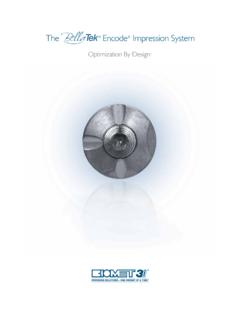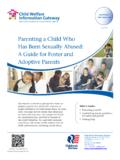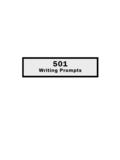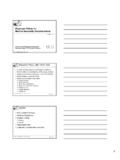Transcription of Center for Clinical Standards and Quality/Survey ...
1 DEPARTMENT OF health & HUMAN SERVICES. Centers for Medicare & Medicaid Services 7500 Security Boulevard, Mail Stop C2-21-16. Baltimore, maryland 21244-1850. Center for Clinical Standards and Quality/Survey & Certification Group Ref: S&C: 15-XX-NH. DATE: TO: State Survey Agency Directors FROM: Director Survey and Certification Group SUBJECT: Advance Guidance for Appendix PP: Position Change Alarms, liquid controlled medications, and the role of dental hygienists Memorandum Summary Alarms in Nursing Homes: Some nursing homes use various types of position change alarms as a fall prevention strategy or in response to a resident fall. Evidence does not support that alarm use effectively prevents falls. Alarms may also have adverse consequences for residents and the facility environment. The Centers for Medicare & Medicaid Services (CMS) has revised the guidance to surveyors in Appendix PP under F221/222 and F323 to discuss the appropriate role of position change alarms in resident care.
2 Liquid Controlled Medications: Absolute accuracy in tracking use of liquid controlled medications may not be possible due to the opaque container used, markings that show approximate volume, slight volume overfill or underfill by manufacturer, and the generally accepted method for recording usage. CMS has revised guidance at F431 to clarify how surveyors should assess a facility's compliance. Dental Hygienists in Nursing Homes: CMS is addressing the role of dental hygienists in providing dental services in accordance with a State's scope of practice laws and regulations. CMS has revised guidance at F411 and F412. The CMS is revising surveyor guidance in Appendix PP of the SOM under F221/222, F323, F431, F411, and F412. Specific changes are described in each section below. The regulatory language remains unchanged. 1. Page 2 State Survey Agency Directors A. Position Change Alarms in Nursing Homes Approximately one-half of all nursing home residents fall each year in the United States and one in three of those residents fall two or more Serious potential consequences of falls for residents include physical injuries, pain, increased risk of death, impaired function, fear of falling and self-imposed limitations on activities leading to social Facilities often implement alarms as a fall prevention strategy or in response to a resident fall.
3 Types of alarms include, but are not limited to, chair and bed sensor pads, cords clipped to a resident's clothing, cuffs worn on the leg, seatbelt alarms, and infrared beam motion The alarms are designed to monitor a resident's movements or hasten the response to a resident who has already fallen. Position change alarms do not eliminate the need for adequate supervision nor do they replace individualized, resident-centered care planning to prevent falls. The efficacy of alarms to prevent falls has not been proven and often these devices simply serve to alert the staff that a fall has Individual facility efforts to reduce use of alarms have shown falls actually decrease when alarms are eliminated and replaced with other individualized interventions. Facility staff also reported positive benefits for residents such as decreased agitation, improved sleep, and a lower incidence of pressure Additionally, alarms may meet the definition of a restraint as the alarms may restrict freedom of movement and may not be removed easily by the resident.
4 Adverse consequences to residents attributed to prolonged use of alarms include: Confusion, fear, agitation, or anxiety related to misunderstanding the alarm sound . residents may mistake the alarm as a warning or as something they need to get away from;. Decreased mobility;. Sleep disturbances due to the sound of the alarm or because the resident is afraid to move in bed thereby setting off the alarm;. Decreased social interaction due to embarrassment about or fear of setting off alarm when around other residents or family or due to increased daytime drowsiness from alarm-related sleep disturbances;. Increased dependence on staff for personal care needs leading to decreased physical and psychosocial well-being;. Infringement on freedom, dignity, and privacy;. Skin breakdown;. Bowel and bladder incontinence, and Increased dependence on staff for personal The sound of alarms may also create a stressful environment for staff. 2. Page 3 State Survey Agency Directors Survey Implications CMS neither prohibits nor requires the use of alarms (even on a trial basis) as part of an individualized fall prevention program.
5 However, in the event that a facility uses alarms as part of the plan of care to prevent falls, the surveyor must confirm that staff have considered if the device meets the definition of a restraint and whether staff may have implemented the alarm(s). for convenience. The surveyor guidance for 42 CFR (a) defines physical restraints as any manual method or physical or mechanical device, material, or equipment attached or adjacent to the resident's body that the individual cannot remove easily which restricts freedom of movement or normal access to one's body. Additionally, the guidance defines convenience as any action taken by the facility to control a resident's behavior or manage a resident's behavior with a lesser amount of effort by the facility and not in the resident's best interest.. Surveyors must evaluate whether any negative outcomes occurred as a result of alarm use. The medical record must show evaluation of the risks and benefits of the use of the alarm(s).
6 If a facility implements a plan to reduce and/or eliminate use of alarms in order to contribute to a more home-like environment, the facility shall not be considered noncompliant with F323 solely based on choosing not to use or activate the alarms. However, the surveyor must find evidence of other interventions in the care plans for residents at risk for falls or with a history of falls, such as staff making purposeful rounds to proactively identify a resident's needs. Assessments must focus on the individual needs and routines of residents to help identify triggers for movement, such as pain, need to go to the bathroom, or need to reach a personal item. Surveyors must find evidence that staff analyzed information necessary to provide appropriate care and services to prevent falls including an analysis of facility systems and any individualized, resident-centered interventions to address any gaps or barriers identified in the current systems. B. Liquid Controlled Medications Liquid controlled medications are often dispensed in multi-dose containers with calibration marks to indicate approximate volume.
7 The containers may also be opaque to protect the medication from light. Surveyors should be aware that absolute accuracy in tracking volume and use of liquid controlled medications may not be possible. The actual volume in these containers may be slightly over or under the manufacturer's stated volume depending on the shape and material of the container and the formulation of the medication such as thick liquid suspensions. The general standard of practice for documenting usage of liquid controlled medications is to record the dose administered and estimate the remaining amount. The opaque container, measurement markings, manufacturer fill volume variation, and method for recording usage all make detection of diversion for liquid controlled medications more difficult. Manufacturer's instructions may list the estimated volume variance ( , 30 mL plus or minus mL), and if concerns arise, surveyors would want to review the manufacturer's instructions for information related to fill variance.
8 For liquid controlled medications, signs of diversion may include: a significant discrepancy between the written balance of remaining medication compared to the Page 4 State Survey Agency Directors 3. remaining amount in the bottle upon visual inspection; changes in the viscosity or color of the medication; reports of spills; and, as with other controlled medications, statements from a resident that the medication is not working. Survey Implications If surveyors identify misuse, a significant discrepancy in expected and actual volume, or diversion of any controlled medication, they should consider and investigate these requirements: F309 - Quality of care, for evidence and/or potential outcomes, such as unrelieved pain. For example, evidence that on a particular shift, or when a particular staff member is working, that the resident's pain symptoms are not relieved to the extent possible but the pain symptoms are met to the extent possible on other shifts;. F425 - Pharmacy Services, for policies for safeguarding and access, monitoring, administration, documentation, reconciliation and destruction of controlled substances.
9 F431 - Pharmacy service consultation, for drug records and reconciliation of controlled drugs;. F514 - Clinical Records, accuracy of medical record and for the documentation of the administration of the medication and outcomes; or F520 - Quality assessment and assurance, for how the QAA committee monitors the administration, reconciliation and disposition of controlled substances in the facility. In addition, if the investigation identifies diversion of a resident's medication, the surveyor must review for F224- Misappropriation of Resident's Property. If it is determined that a resident's medications were diverted for staff use, the State Agency must make referrals to appropriate agencies, such as local law enforcement; Drug Enforcement Administration; State Board of Nursing; State Board of Pharmacy; and possibly the State licensure Board for Nursing Home Administrators. C. Dental Hygienists in Nursing Homes The oral cavity health (natural teeth and dentures) of long term care residents is a major issue due to the enormous consequences of poor oral health , decreased psychosocial function, quality of life and subsequent medical costs.
10 Long term care residents with poor oral cavity health care are more at risk for exacerbation of conditions such as heart disease, diabetes, malnutrition, stroke, bacteremias, aspiration pneumonia, periodontal disease resulting in loss of teeth, candidiasis (fungal infection), and squamous cell carcinoma (cancer of the mouth). In addition, medication side effects such as dry mouth, speech and swallowing problems, tardive dyskinesia (involuntary body movements), and gingival overgrowth contribute to oral health problems. Lastly, a resident with poor oral cavity health care may demonstrate poor self-esteem, decreased socialization, and due to unattended pain, resistance to staff care. CMS also recognizes that there may be a shortage of dental practices accepting new Medicare and Medicaid patients, and an increased need for and numbers of long term residents requiring oral health care Page 5 State Survey Agency Directors 4. Skilled nursing facilities must provide or obtain from an outside resource, in accordance with (h), routine and emergency dental services to meet the needs of each resident (42 CFR.)















